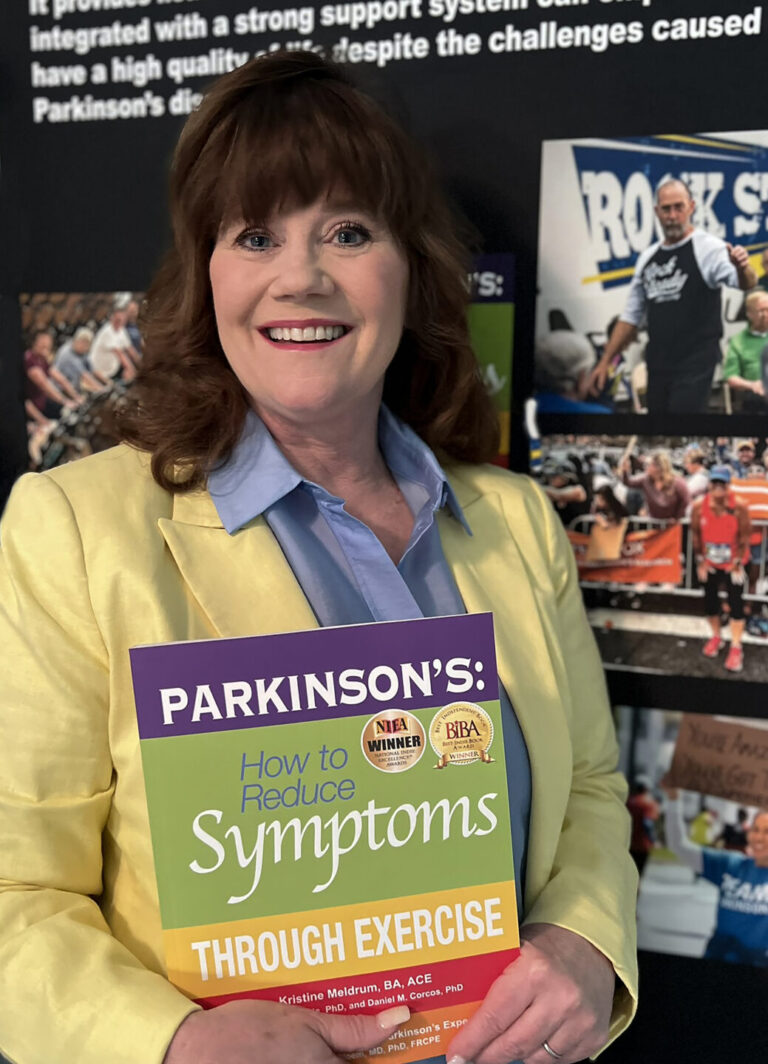
Parkinson’s: How to Reduce Symptoms Through Exercise was the winner for Best First Book/Non-Fiction in the 2025 IndieReader Discovery Awards, where undiscovered talent meets people with the power to make a difference.
Following find an interview with author Kristine Meldrum.
“I am honored to receive the “Best First Book” award for nonfiction. My book, “Parkinson’s: How to Reduce Symptoms Through Exercise,” delivers a crucial message for those living with Parkinson’s disease: there is hope! Over the past twenty years, scientific research has demonstrated that exercise is not only a genuine therapy for Parkinson’s disease (PD) but also the only approach proven to slow the progression of the disease. Currently, neither medication nor surgery cannot achieve this. It is crucial to follow the specific methods and protocols outlined in the book (based on research) to reduce symptoms of PD. As the fastest-growing neurological disorder worldwide, it is imperative to inform those millions affected by PD that exercise can help them manage their condition and regain control over their lives.”
What is the name of the book and when was it published?
Parkinson’s: How to Reduce Symptoms Through Exercise
What’s the book’s first line?
“You give me hope” is the phrase I hear most when I explain what exercise can do for a person with Parkinson’s Disease.
What’s the book about? Give us the “pitch”.
Parkinson’s disease is the fastest-growing neurological disorder in the world, currently affecting over 10 million people. This number is expected to increase significantly in the coming decades as the baby boomer generation reaches sixty-five. By 2030, the United States alone is projected to have 78 million seniors, leading to an unprecedented number of Parkinson’s disease diagnoses.
Many people with Parkinson’s are unaware that exercise is the only therapy proven to help slow the progression of the disease and reduce symptoms by up to 35% when performed using scientifically based methodologies. Additionally, they may not realize that medications and surgical interventions cannot slow disease progression.
Parkinson’s: How to Reduce Symptoms Through Exercise is the first book to comprehensively explain how the latest scientific research on Parkinson’s exercise is a genuine therapy to reduce PD symptoms and can provide life-changing results, putting the person with PD back in control.
What inspired you to write the book? A particular person? An event?
My clients with Parkinson’s disease have truly inspired me. Over the past decade, I have seen life-changing results through exercise interventions. Many individuals have progressed from relying on a cane to no longer needing one. Some have managed to stay out of a wheelchair thanks to the power of exercise. I’ve witnessed others regain their ability to engage in activities they love, such as playing golf, which they had to give up because of the disease. Exercise has played a crucial role in enabling them to return to these things they love.
I was also frustrated by the misinformation surrounding exercise for individuals with PD. Many neurologists and PD organizations promote the idea that simply “walking” or “gardening” is sufficient, but that’s misleading. Activity alone is not the same as structured exercise. When people with PD engage in these activities and don’t see improvements, they conclude that exercise isn’t effective and stop exercising. This confusion stems from the mixed messages being communicated from so many sources.
What’s the main reason someone should really read this book?
Individuals with Parkinson’s disease should consider reading this book to regain control over their lives. By managing their motor and non-motor symptoms effectively, they can lead happier and healthier lives. It’s important for them to do this not only for themselves but also for the loved ones who care about them.
What do you do for work when you’re not writing?
I am honored to train individuals with Parkinson’s disease (PD). I develop their exercise plans and evaluate their progress year-round. I speak at Parkinson’s conferences globally and educate individuals with PD with a presentation titled, “How to Exercise to Reduce Parkinson’s Symptoms.”
How much time do you generally spend on your writing?
I write 7 days a week. I am working on a Companion Guidebook to Parkinson’s: How to Reduce Symptoms Through Exercise.
Would you go traditional if a publisher came calling? If so, why?
It would depend.
Is there something in particular that motivates you (fame? fortune?)
My motivation is helping people with Parkinson’s. I have a non-profit that is for people with Parkinson’s in my area.
